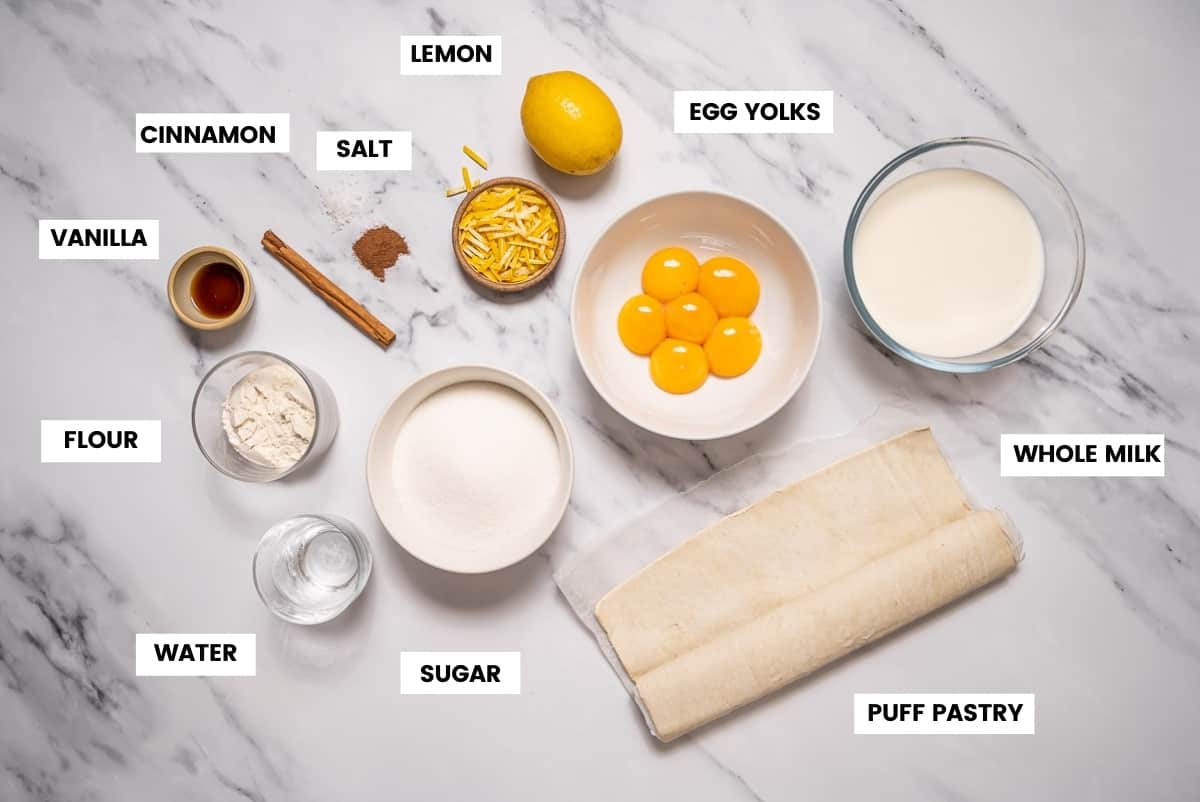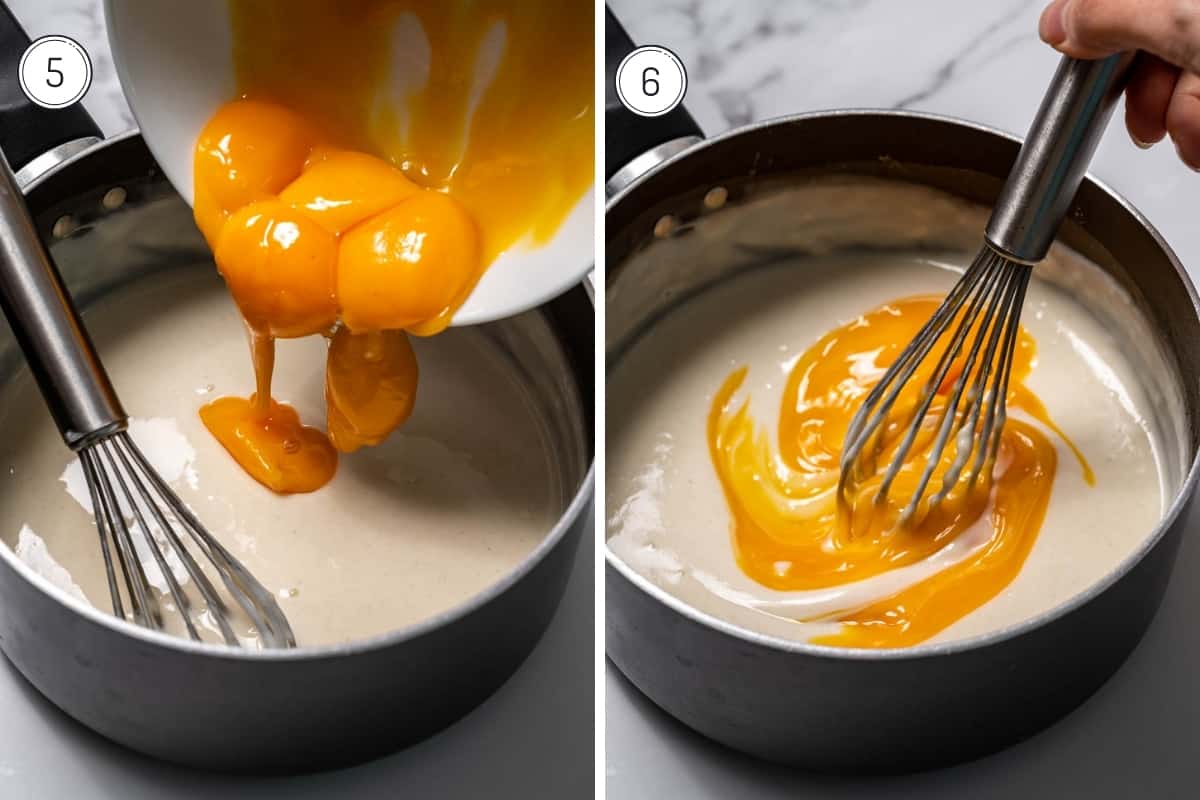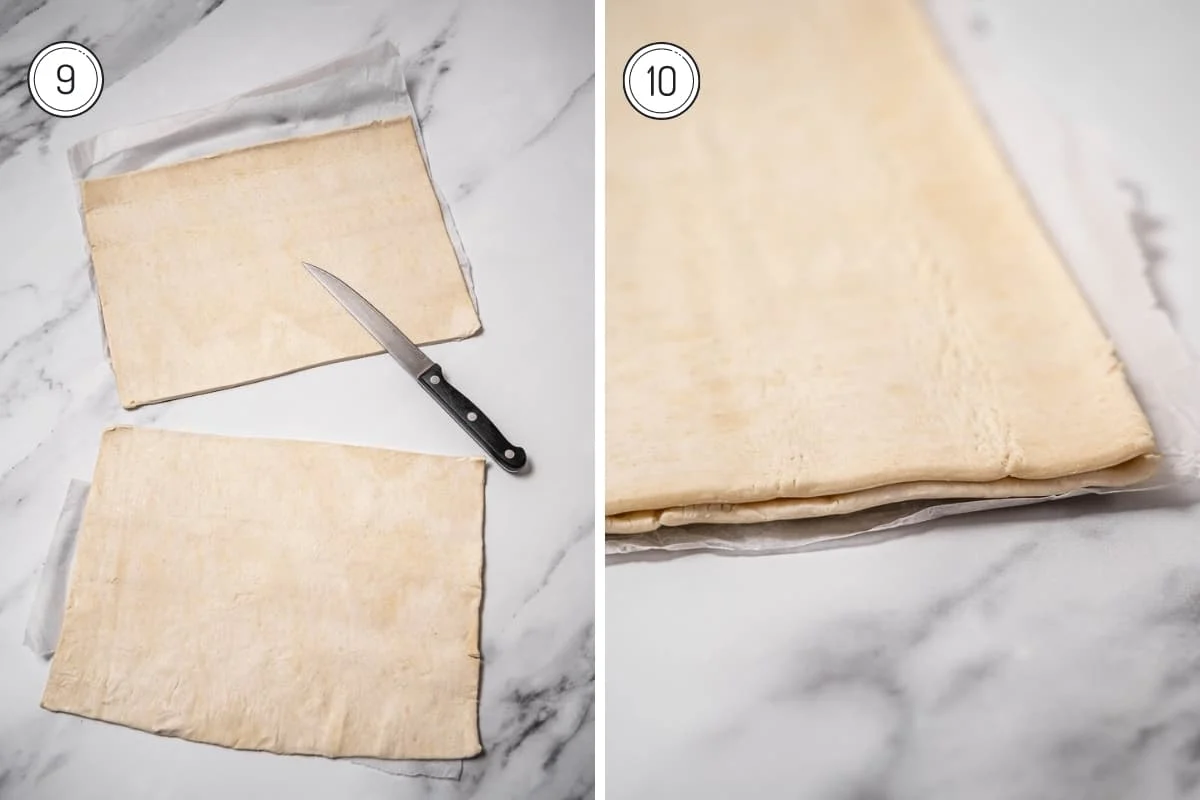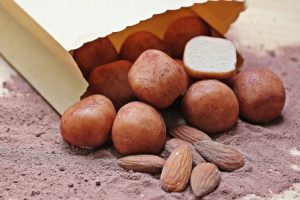Today David shares one of my favorite Portuguese recipes ever — the famous pastel de nata recipe for Portuguese custard tarts!
Whenever I’m in Portugal, I know I’m coming back a few pounds heavier.
Aside from all of the delicious seafood dishes, bowls of rice, and endless glasses of wine, Portugal is also home to my waistline’s arch-nemesis: pastéis de nata (pastel de nata in the singular — but who stops at just one?)

These Portuguese custard tarts are dangerously delicious. You might think that one would be enough, but only if you’ve never tried one. Because there’s something addictive about the combo of blistered, caramelized custard and flaky golden brown puff pastry.
Try one, and you’re hooked for life!

The most famous custard tarts come from the town of Belém, just outside of Lisbon. Here, in the Jerónimos Monastery, the famous recipe was born!
The version below gives you as close a taste to the original as possible. For a real classic taste, serve the pastéis warm, dusted with cinnamon. I opted for pre-made puff pastry, but making your own from scratch is definitely an option too!

Key Ingredients

Key Ingredients: Egg yolks, milk, flour, salt, cinnamon, sugar, water, lemon, vanilla, and puff pastry.
Ingredient Notes & Substitutions
- Custard: Use a pastry thermometer for best results (if you like to make sweets or fried foods, this is a great investment!).
- Dough: I don’t make my dough from scratch here. I did once… it was a lot of work and quite fussy. I find that good quality puff pastry dough works very well. For the homemade dough, I look forward to my next trip to Lisbon!
- Oven temperature: A quick note about the oven temp — it’s high! If your oven doesn’t go this high, just put it at the max. heat. And if you have a convection oven, this is a recipe to use that setting!
Pastel De Nata Recipe (Portuguese Custard Tarts)
Here is my step-by-step tutorial to delicious Portuguese custard tarts every time. For the full printable recipe (including exact measurements) scroll down.
Steps 1-2: Begin by making a sugar syrup. Combine the sugar, water, vanilla extract, lemon zest, and cinnamon stick in a saucepan and cook at a medium heat until a thermometer reads 220°F (100°C).

Steps 3-4: In a separate saucepan, whisk the milk, flour, and salt together until well combined. Cook over medium heat, whisking constantly, for about 5 minutes until thickened. Remove from the heat and let cool for 10 minutes.

Steps 5-6: Whisk in the egg yolks until well combined.

Steps 7-8: Remove the cinnamon stick from the sugar syrup and slowly add to the mixture. Then strain into a pouring cup.

Steps 9-10: Cut the puff pastry in half and place one half on top of the other. Then roll into a tight log (across the shorter side so you have a long log). Cut the log into 12 equal pieces (not pictured).

Steps 11-12: Now press each of the 12 pieces into a well greased muffin tin. You can wet your thumb with cold water to keep the dough cool enough. The dough should extend slightly past the edges of the tin.

Steps 13-14: Fill each cup of dough 3/4 of the way to the top with custard and bake at 550°F (290°C) (or the highest your oven goes) for about 10-12 minutes. You want the custard to brown and even blacken a bit on top — this is a sign of a true pastel de nata!

Recipe Tips & FAQs
While you can freeze pasteis de nata, these Portuguese custard tarts are much better when eaten immediately. If you must freeze them, use them within one month and let them come to room temperature before you pop them in a hot oven (400°F/200°C) for a minute or two.
These pasteis de nata will last up to five days. But the dough loses its distinctive crispy texture pretty quickly. Even on day two you’ll notice a difference. I recommend making small batches to enjoy within a day or two.
Keep them out on the counter the day you make them, and if there are still leftovers you can store in the fridge. But make sure they come to room temperature before enjoying the next day (or feel free to pop into the oven for a quick warm up).

Serving Suggestions
A custard tart is perfect any time of day — breakfast, snack, dessert… but always with a cup of coffee! I love it with a “bica” (espresso) but many of my friends go for a café con leche (or café com leite should I say!).






























